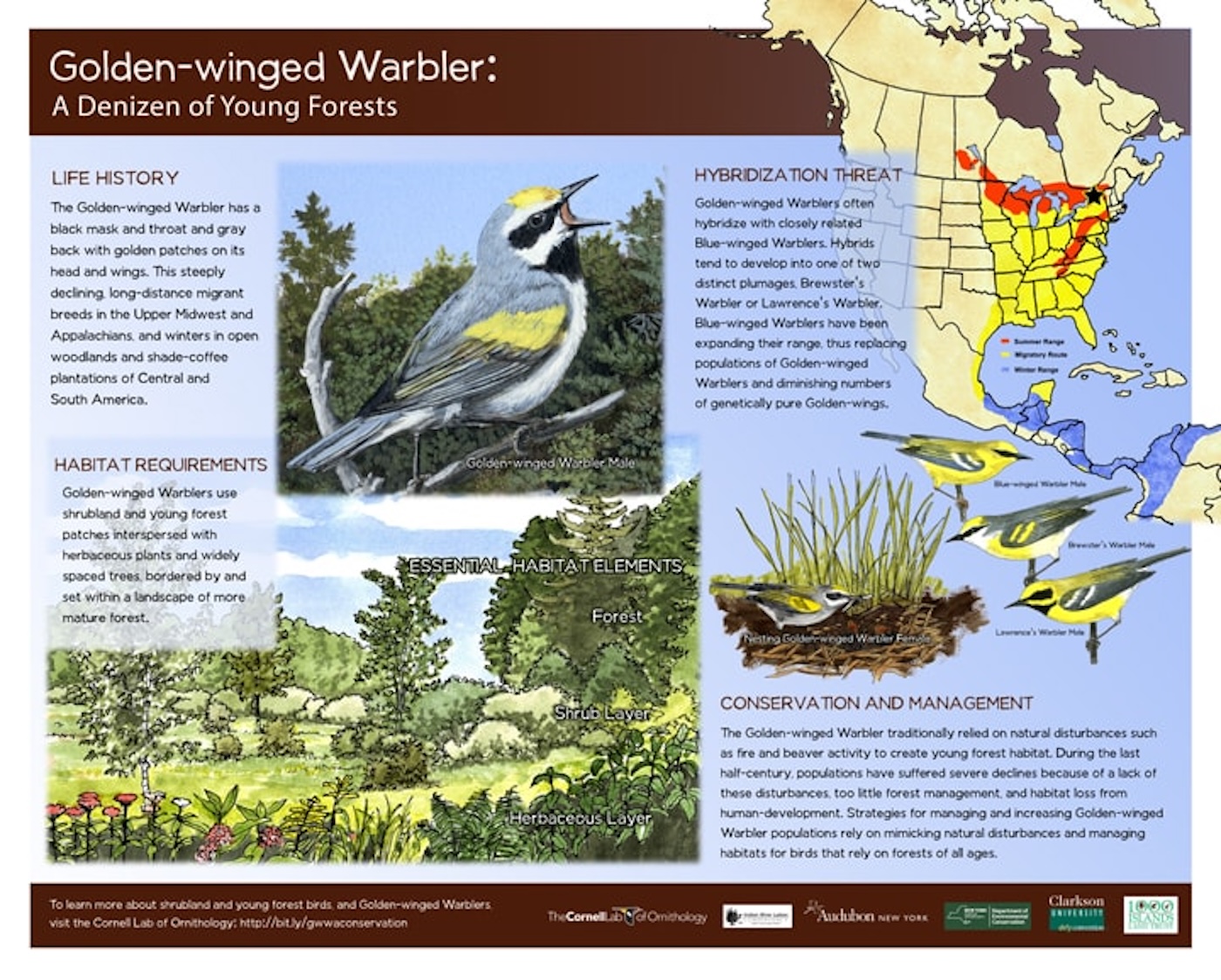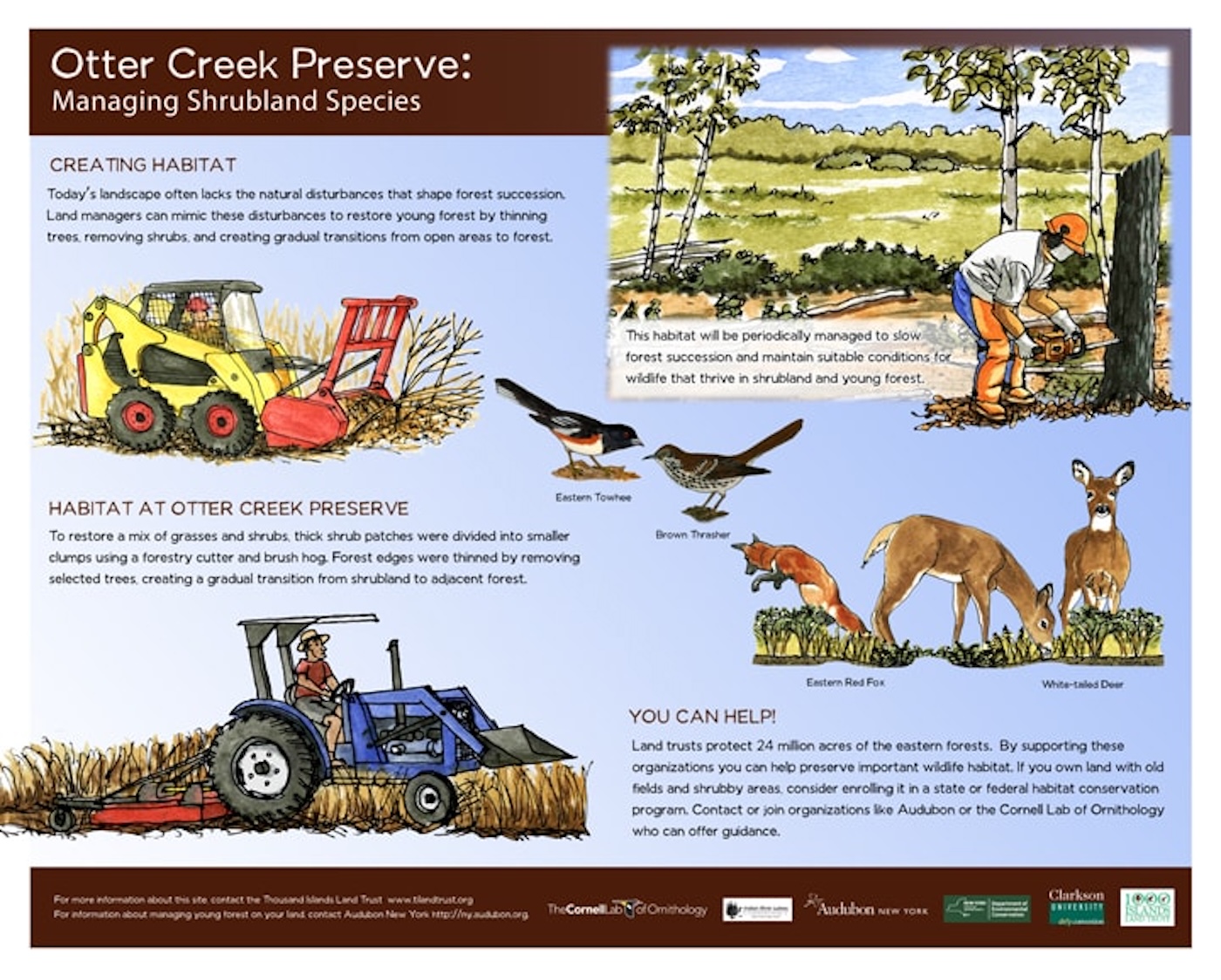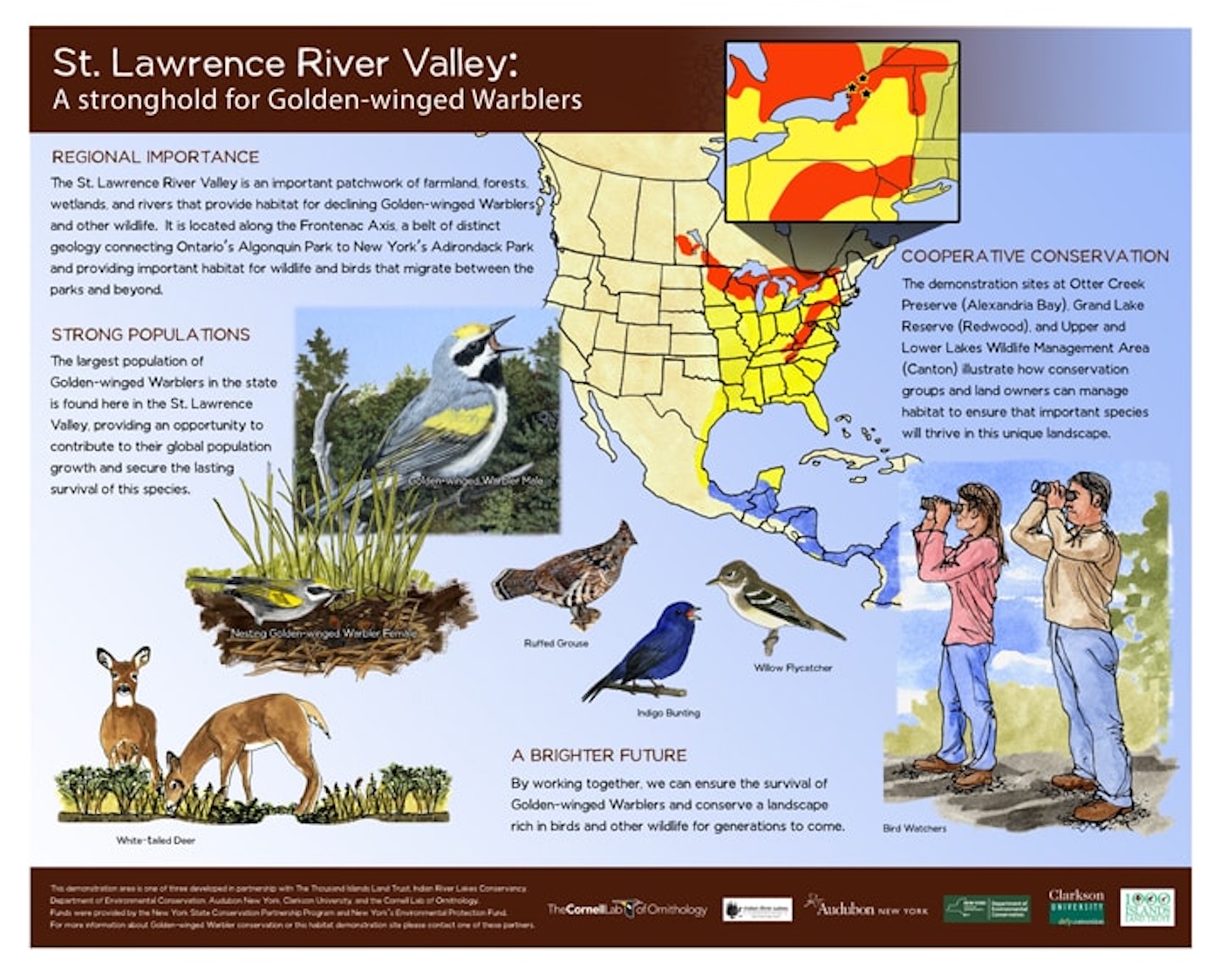TILT’s Partnership for Golden-winged Warblers
In 2013, TILT partnered with the Indian River Lakes Conservancy, the New York Department of Environmental Conservation, and other local organizations to form the St. Lawrence Valley Partnership for Golden-winged Warblers. This collaboration aims to create nesting habitat for the declining Golden-winged Warbler, a neotropical migratory bird whose population suffers from habitat loss and hybridization with similar species.
The St. Lawrence River Valley serves as a stronghold for these birds, with efforts focused on restoring habitat to boost local populations and reestablish connectivity between Great Lakes and Appalachian populations.
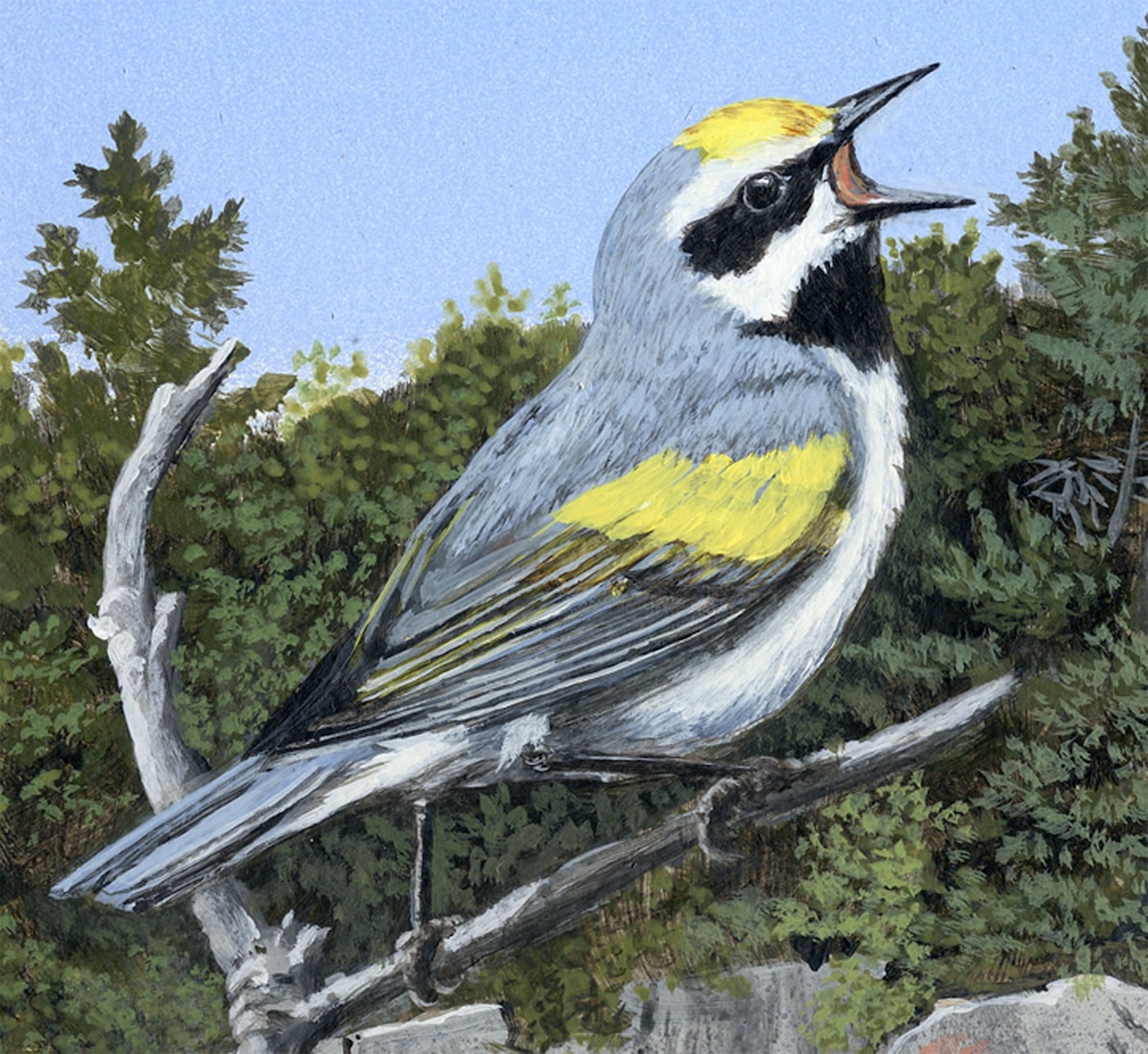
Golden-winged Warblers, as shrubland species, require early successional habitats with specific features: grass for nesting, shrubs for shelter, and scattered trees for male perches. Restoration efforts also benefit other shrubland species, like American Woodcock, Ruffed Grouse, and Eastern Towhee, as well as wildlife such as Red Fox and White-tailed Deer. Partners including the Cornell Lab of Ornithology, Audubon New York, and Clarkson University provide management plans tailored to these habitat needs and conduct pre-restoration surveys to monitor current warbler populations.
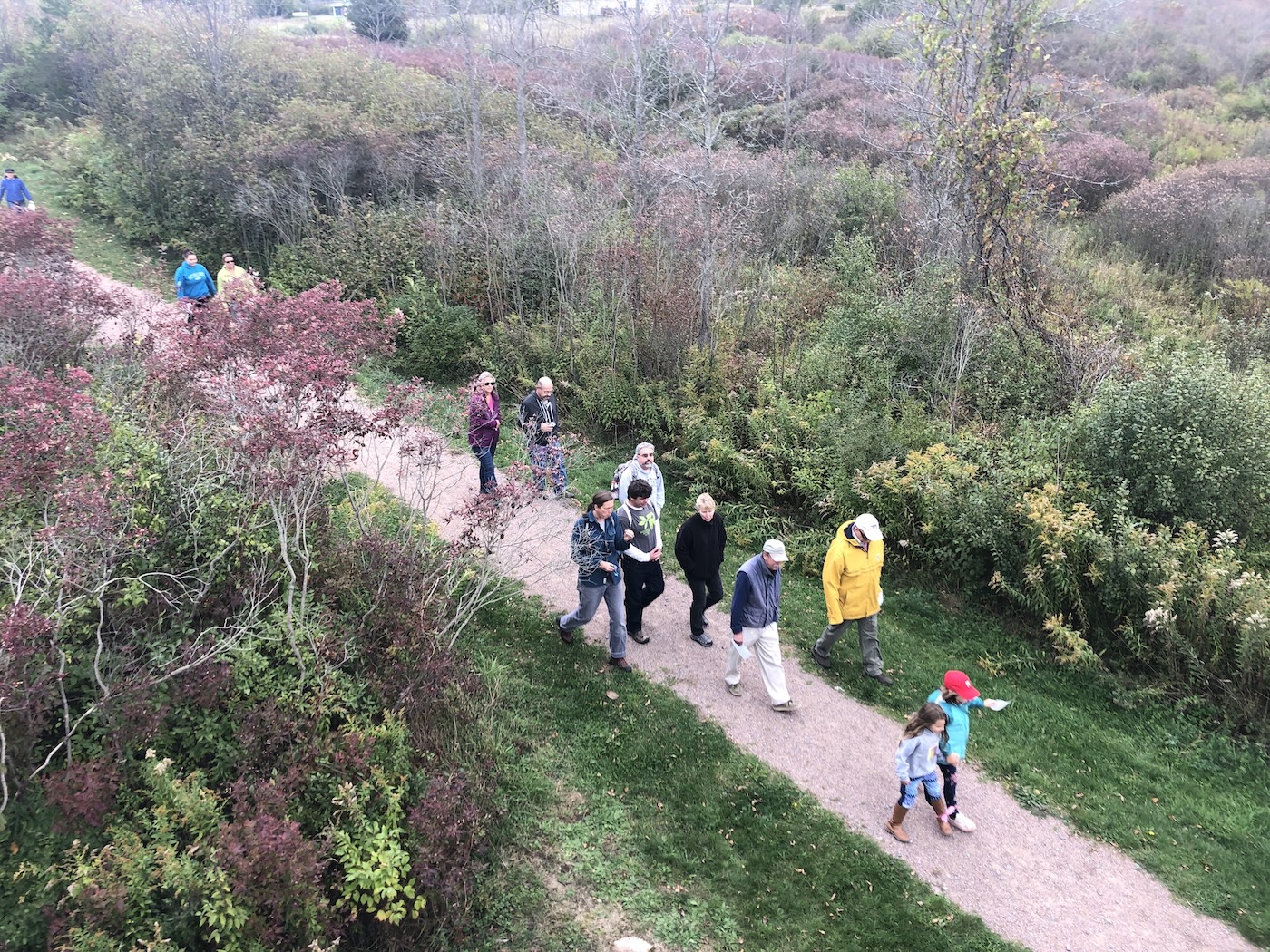
Restoration at Otter Creek
TILT’s Otter Creek Preserve, once abandoned farmland, offers ideal early successional forest habitat. With support from the Cornell Lab of Ornithology and Audubon New York, site surveys identified a Brewster’s male (a Golden-winged Warbler hybrid), suggesting potential to attract pure Golden-winged Warblers. TILT staff created a habitat mosaic with shrub clusters, scattered perching trees, and mowed grass to support nesting. Demonstration sites at Otter Creek, IRLC Grand Lakes Reserve, and NYS DEC’s Upper and Lower Lakes provide examples of effective habitat management for Golden-winged Warblers.



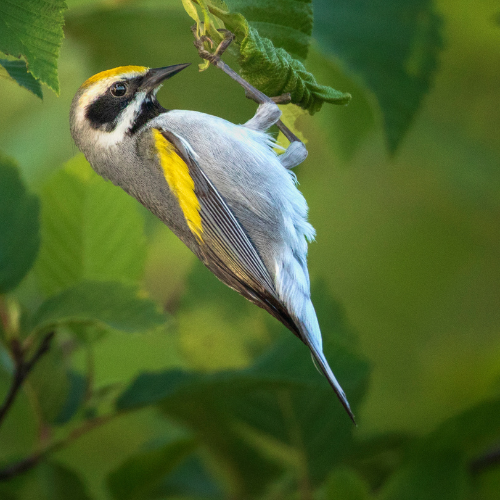
MAPS
